
11 Nov 展览 | 经壑 浙南文化研究与社会调研汇报展
经壑
PATH
2019 年度文化研究与社会调查课程浙南下乡汇报展
中国美术学院跨媒体艺术学院
开幕时间
curtain time
2019年11月11日17:00
展览时间
exhibition time
2019年11月11日—11月17日
8:30—17:00
展览地点
Venue
中国美术学院南山校区3号楼2楼展厅
指导老师
Advisors
宋振 汤南南
策展人
Curators
祝金坤 赵翔风 吴紫睿 陈鹏
策展团队
Curatorial team
吕艺杰 王诗惠 殷淑蕾 何佳轩 吴泓华
课程介绍
引入社会学和人类学的方法,建立学生的社会和历史意识,引导学生从视觉文化生产的角度理解视觉艺术,而不是停留在个性、创造力、形式与内容这类传统美学争论。要求学生 在该过程中跨越学科的限制, 熟悉社会调查的理论和方法。使他们对于任何对象能够深入 分析其背景和理论意义,在广阔的文化框架中定位研究和表现对象。培养搜集、处理和组织 材料以形成文化产品的能力。培养筹划和管理,实施和操作一个完整项目的良好的工作习惯。
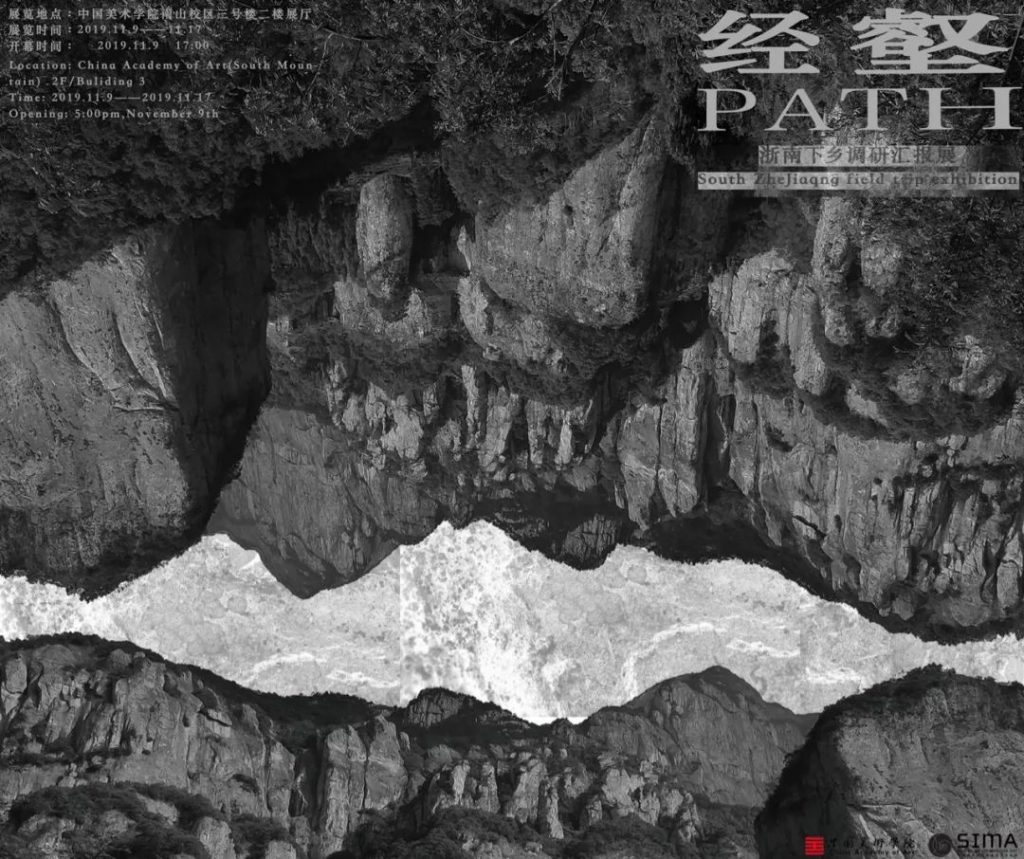
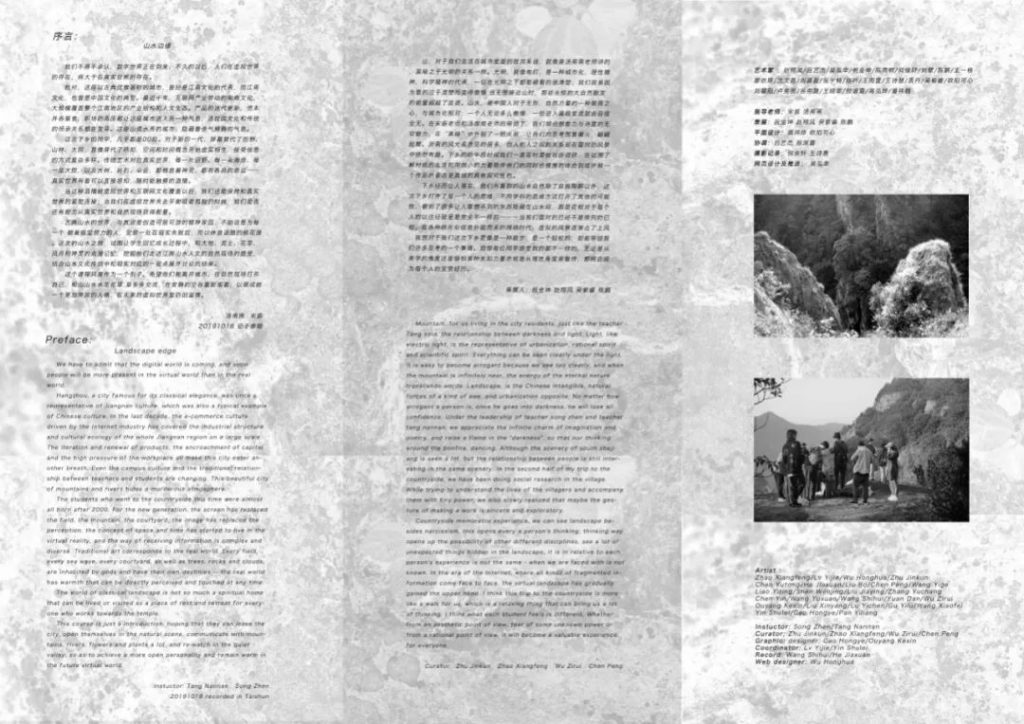
课程时间 | 2019年10月8日至11月1日
指导老师 Instuctor | 宋振 汤南南
助教 Cordinator | 宋戈文 王博
参与成员 | 全体下乡师生共30人
跨媒体艺术学院 2018级二年级本科生 26人
跨媒体艺术学院 博士生 1人
课程内容
授课教师: 汤南南 宋振
授课时间:2019年10月8日至11月1日
一.课程大纲: 引入社会学和人类学的方法,建立学生的社会和历史意识,引导学生从视觉文化生产的角度理解视觉艺术,而不是停留在个性、创造力、形式与内容这类传统美学争论。要求学生 在该过程中跨越学科的限制, 熟悉社会调查的理论和方法。使他们对于任何对象能够深入 分析其背景和理论意义,在广阔的文化框架中定位研究和表现对象。培养搜集、处理和组织 材料以形成文化产品的能力。培养筹划和管理,实施和操作一个完整项目的良好的工作习惯。
二.考察重点: 2017年末,“致敬2018”项目总策展人高士明老师在“世纪:一个提案”的演出现场的开场白中曾说:“过去这个迅疾变化的世纪,相对于整个人类纪只是一个片刻,在山水世界中, 在自然史中它更只是短短的一瞬。”2019年度文化研究与社会调查课程试图通过回到山水之间,引领同学们重新展开传统与 现代社会发展变迁的那一瞬间。因此本次下乡的师生群体将细致地察访浙南山水。我们会将 温州作为山、水、诗意的考察中心,亦会将其作为中国书画观察力、现代景观消费文化批判 力的训练现场,我们从文化自然景观和历史变迁的视角入手,对乐清、永嘉、泰顺进行系 统地考察,并在返回跨媒体艺术学院后完成一个实验性的主题展览。
三.考察范围: 雁荡山及周边民居、楠溪江沿岸生态、泰顺廊桥等。
前言
山水边缘
我们不得不承认,数字世界正在到来,不久的以后,人们在虚拟世界的存在,将大于在真实世界的存在。
杭州,这座以古典优雅著称的城市,曾经是江南文化的代表,而江南文化,也曾是中国文化的典型。最近十年,互联网产业带动的电商文化,大规模覆盖整个江南地区的产业结构和人文生态。产品的迭代更新,资本并吞蚕食,职场的高压都让这座城市进入另一种气息,连校园文化和传统的师承关系都在变异。这座山清水秀的城市,隐藏着杀气腾腾的气息。
这次下乡的同学,几乎都是00后。对于新的一代,屏幕替代了田野、山林、大院,意像替代了感知,空间和时间概念开始虚实相生,接受信息的方式复杂多样。传统艺术对应真实世界,每一片田野、每一朵海浪、每一座大院,以及大树、岩石、朵云,都栖息着神灵,都有各自的命运——真实世界有着可以直接感知,随时能触摸的温情。
当这种温情被虚拟世界和互联网文化覆盖以后,我们还能保持和真实世界的紧密连接;当我们在虚拟世界失去平衡或者孤独的时候,我们是否还有能力从真实世界和自然现场获得能量。
古典山水的世界,与其说是创造可居可游的精神家园,不如说是为每一个朝着庙堂努力的人,安放一处在现实失败后,可以休息退隐的桃花源。这次的山水之旅,试图让学生回忆成长过程中,和大地、泥土、花草、风月和神灵的点滴记忆,挖掘他们走进江南山水人文的自然现场的感受,结合山水文化传统中和现实对应的一些点展开讨论的结果。
这个课程只是作为一个引子,希望他们能离开城市,在自然现场打开自己,和山山水水花花草草多多交流,在安静的空谷重新观看,以便成就一个更加开放的人格,在未来的虚拟世界里仍旧温情。
汤南南 宋振
2019/10/18 记于泰顺
Landspace Edge
We have to admit that the digital world is coming, and soon people will be more present in the virtual world than in the real world.
Hangzhou, a city famous for its classical elegance, was once a representative of Jiangnan culture, which was also a typical example of Chinese culture. In the last decade, the e-commerce culture driven by the Internet industry has covered the industrial structure and cultural ecology of the whole Jiangnan region on a large scale. The iteration and renewal of products, the encroachment of capital and the high pressure of the workplace all make this city enter another breath. Even the campus culture and the traditional relationship between teachers and students are changing. This beautiful city of mountains and rivers hides a murderous atmosphere.
The students who went to the countryside this time were almost all born after 2000. For the new generation, the screen has replaced the field, the mountain, the courtyard, the image has replaced the perception, the concept of space and time has started to live in the virtual reality, and the way of receiving information is complex and diverse. Traditional art corresponds to the real world. Every field, every sea wave, every courtyard, as well as trees, rocks and clouds, are inhabited by gods and have their own destinies — the real world has warmth that can be directly perceived and touched at any time.
When this warmth is covered by the virtual world and Internet culture, we can still maintain a close connection with the real world. When we are out of balance or lonely in the virtual world, do we still have the ability to get energy from the real world and the natural scene?
The world of classical landscape is not so much a spiritual home that can be lived or visited as a place of rest and retreat for everyone who works towards the temple. This trip of mountains and rivers tries to make students recall their memories of the earth, soil, flowers and plants, wind and moon as well as gods in the process of growing up, explore their feelings of walking into the natural scene of Jiangnan’s landscape culture, and discuss the results based on some points corresponding to the landscape culture tradition and reality.
This course is just a introduction, hoping that they can leave the city, open themselves in the natural scene, communicate with mountains, rivers, flowers and plants a lot, and re-watch in the quiet valley, so as to achieve a more open personality and remain warm in the future virtual world.
Instuctor: Tang Nannan Song Zhen
2019/10/18 recorded in Taishun
部分作品
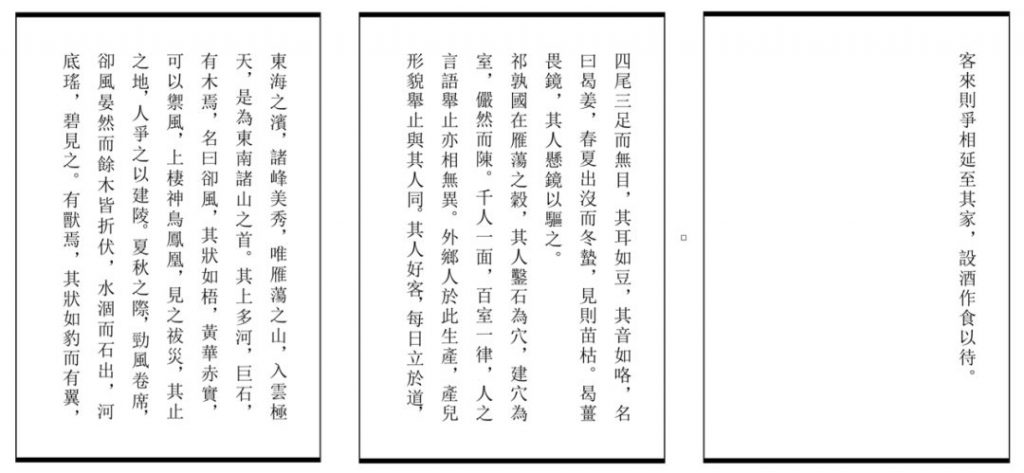
《瓯山奇异录》
Ou mountain strange record
吕艺杰 Lu Yijie
册页
2019
指导老师:宋振 汤南南

“iCloud”
祝金坤 Zhu Jinkun
C4D渲染 截帧
2019
指导老师:宋振 汤南南
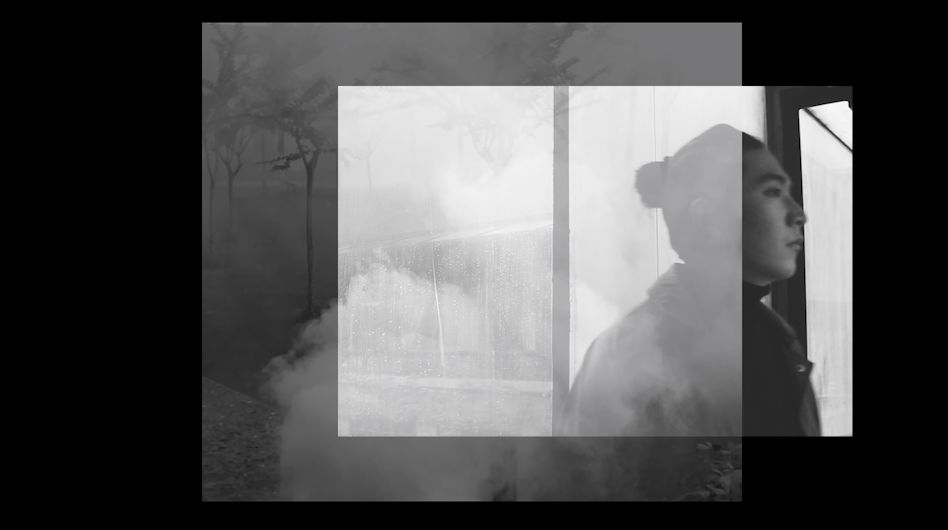
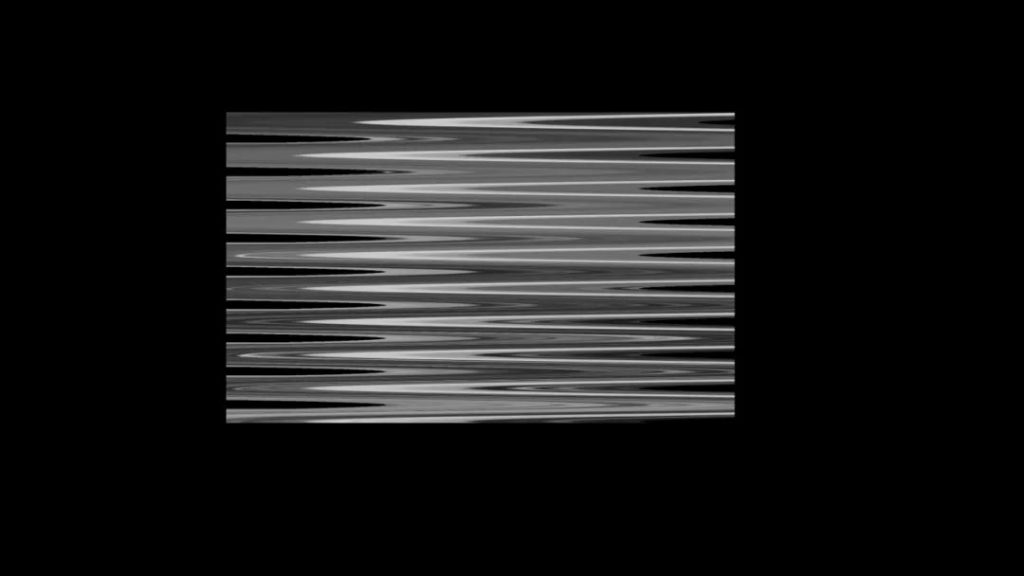
《过度》
transition
吴泓华 Wu Honghua
影像 视频截帧
2019
指导老师:宋振 汤南南
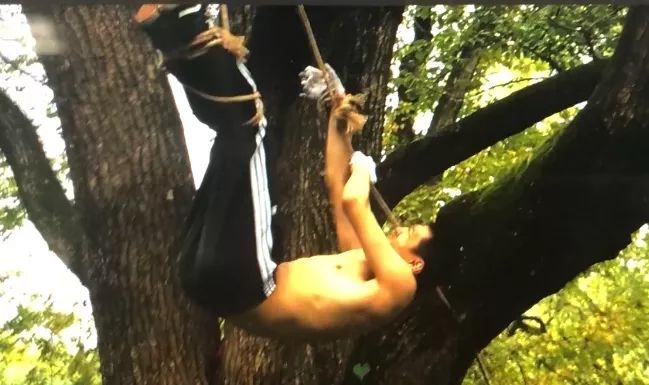
《壶》
pot
陈鹏 Chen Peng
影像 视频截帧
2019
指导老师:宋振 汤南南
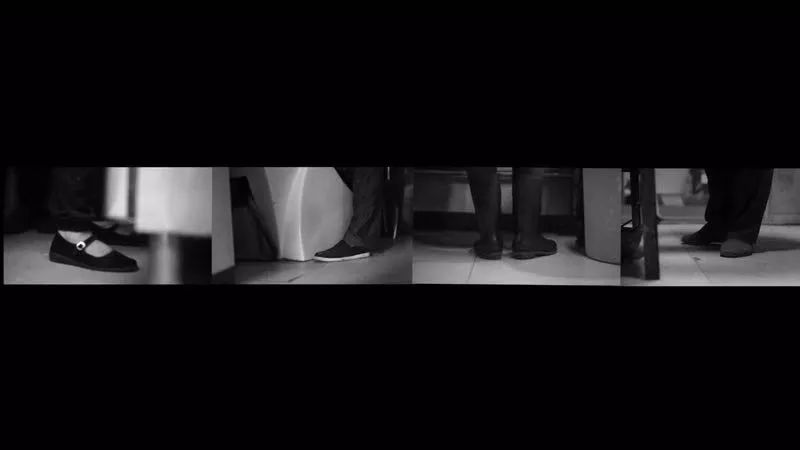
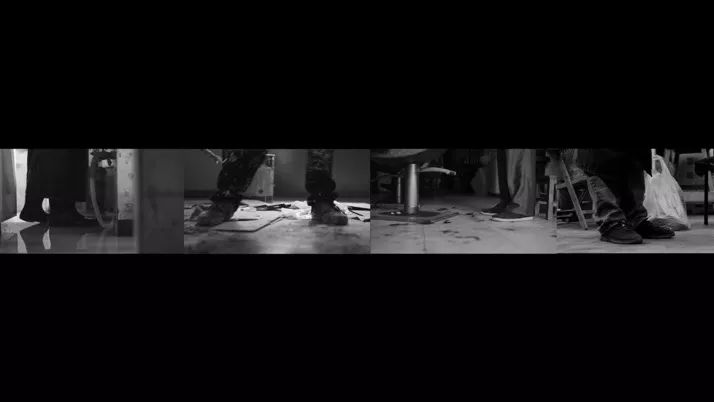
《活水》
flowing water
王诗惠 Wang Shihui
影像 视频截帧
2019
指导老师:宋振 汤南南

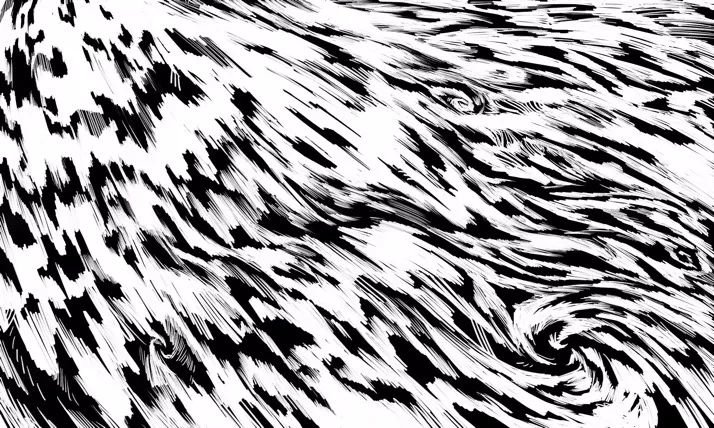
《风》
Wind
潘祎靓 Pan YIliang
动画 截帧
2019
指导老师:宋振 汤南南

《醉山》
rolling stone
影像 截帧
何佳轩
2019
指导老师:宋振 汤南南

《 回归子宫计划——1号》
Regressive uterus program
吴紫睿 Wu Zirui
装置
2019
指导老师:宋振 汤南南
课程考察记录
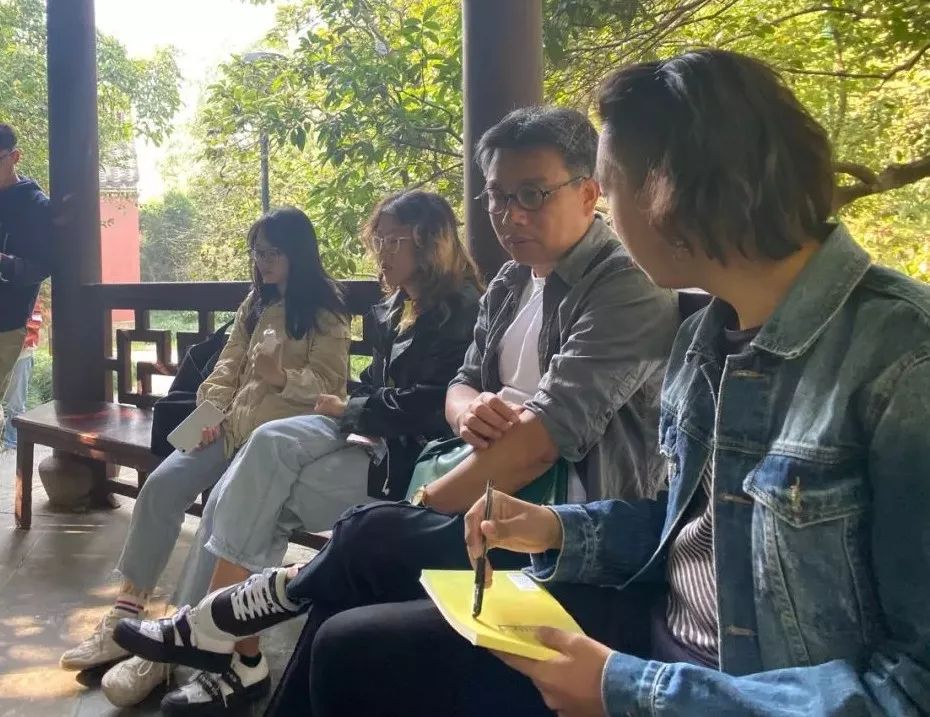



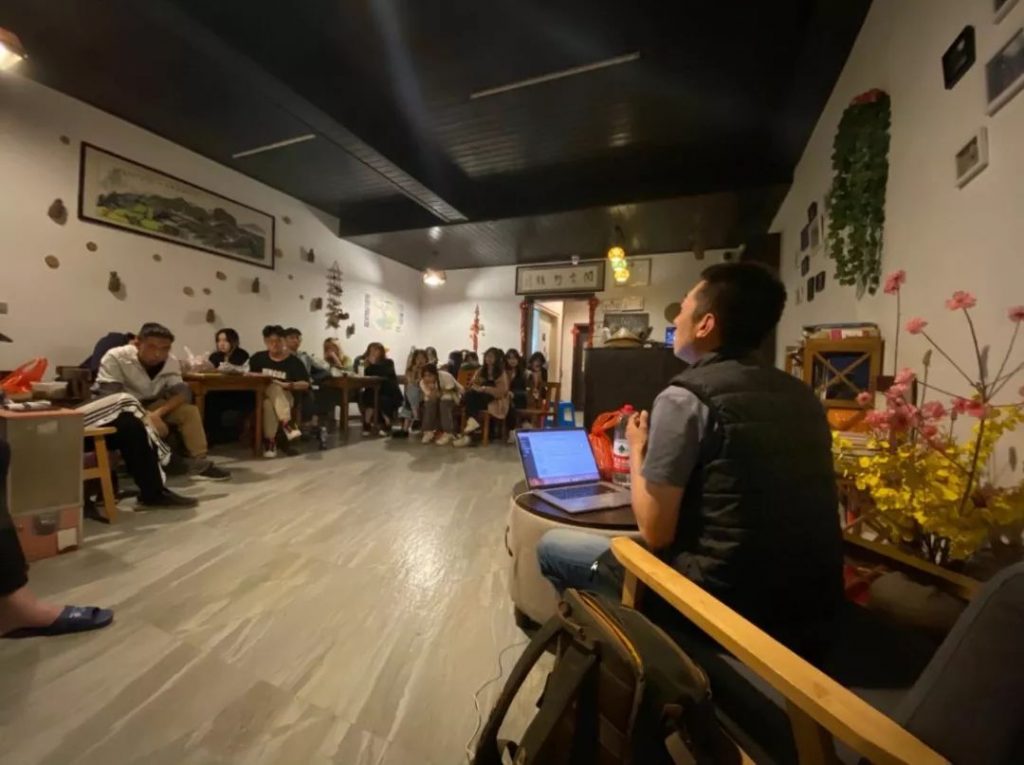
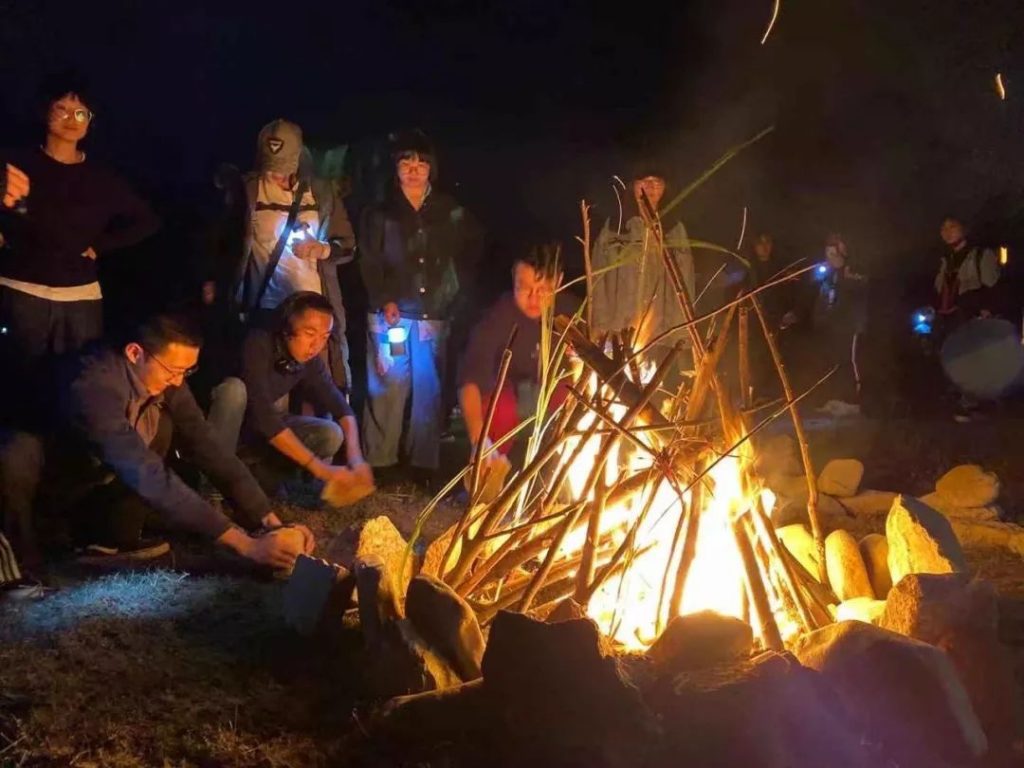
课程参与成员
跨媒体艺术学院 二年级本科生
赵翔风 吕艺杰 吴泓华 刘嘉盈 祝金坤 陈雨桐 何佳轩 刘擘 陈鹏 王一格 廖依婷 沈文晶 张宇畅 陈吟 王雨萱 王诗惠 袁丹 吴紫睿 刘馨阳 欧阳可心 卢奕辰 谷奕潞 王晓菲 殷淑蕾 高泓烨 潘祎靓
跨媒体艺术学院 博士生
宋戈文
经壑展览单位
主办单位
中国美术学院跨媒体艺术学院
承办单位
中国美术学院跨媒体艺术学院
特别鸣谢
宋戈文 王博
以及所有在此次出行帮助我们的人

